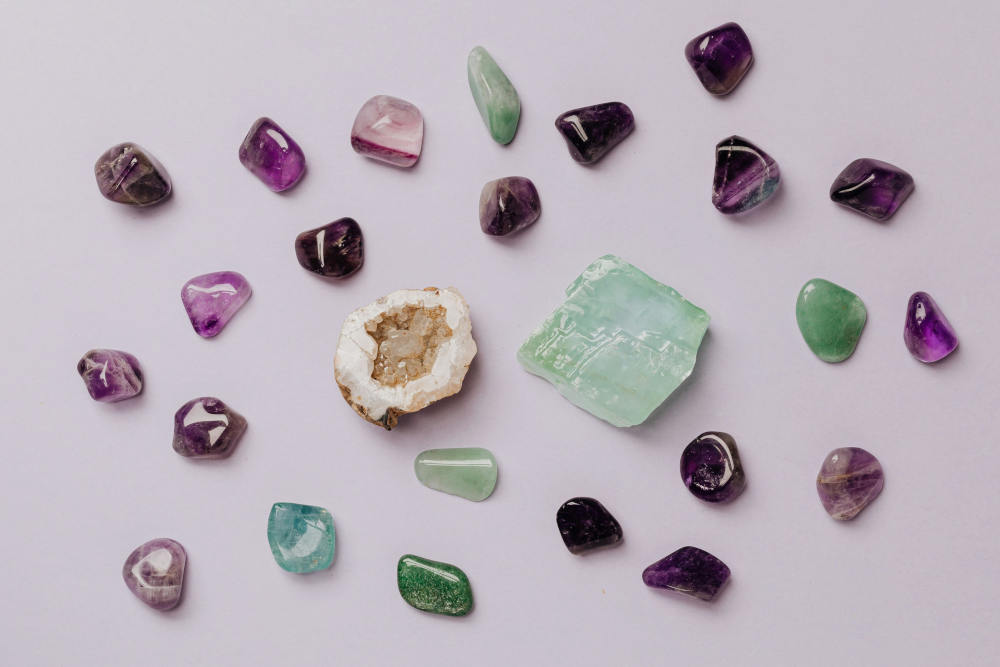
Crystals have long captivated human fascination, admired for their natural beauty and unique structures. In contemporary times, they are often associated with spiritual practices, leading many to question: Are crystals inherently linked to witchcraft? The answer is multifaceted, depending on historical context, cultural practices, and individual beliefs.
Panaprium is independent and reader supported. If you buy something through our link, we may earn a commission. If you can, please support us on a monthly basis. It takes less than a minute to set up, and you will be making a big impact every single month. Thank you!
Crystals in Historical and Cultural Contexts
Ancient Civilizations and Symbolism
Throughout history, various civilizations have attributed symbolic meanings to crystals. In ancient Egypt, amulets made from stones like lapis lazuli and carnelian were believed to offer protection and were commonly used in burial rituals. Similarly, ancient Greeks assigned metaphysical properties to crystals; for instance, amethyst was thought to prevent intoxication. These uses were deeply embedded in the cultural and religious practices of the time, rather than being associated with witchcraft per se.
Crystals in Religious Texts
In the Judeo-Christian tradition, the Bible references various precious stones. The High Priest's breastplate, as described in Exodus 28:17-20, was adorned with twelve different stones, each representing a tribe of Israel. Additionally, the Book of Revelation (21:19-20) describes the foundations of the New Jerusalem adorned with precious stones. These references highlight the symbolic and aesthetic significance of crystals, without attributing to them any inherent magical powers.
Crystals in Modern Spiritual Practices
Use in Contemporary Witchcraft
In modern times, particularly within certain neopagan and Wiccan traditions, crystals are employed as tools in spiritual practices. Practitioners may use crystals for meditation, energy healing, or as part of rituals intended to focus intention or manifest specific outcomes. For example, a "crystal witch" might specialize in using crystals for such purposes, integrating them into their broader spiritual framework. witchcraftsymbol.medium.com
Distinction Between Use and Belief
It's important to note that the use of crystals in these contexts is symbolic and based on the practitioner's belief system. The crystals themselves are not considered to possess inherent powers; rather, they serve as focal points for intention and meditation. This symbolic use distinguishes the practice from the notion of crystals being intrinsically magical or linked to witchcraft universally.
Scientific Perspective on Crystal Healing
From a scientific standpoint, the efficacy of crystals in healing or influencing energy fields lacks empirical support. Studies have shown that any perceived benefits are likely attributable to the placebo effect. While crystals can serve as tools for mindfulness or stress reduction, their use in this capacity is psychological rather than mystical.Wikipedia
Ethical and Environmental Considerations
The popularity of crystals has led to increased mining and trade, raising concerns about environmental impact and ethical sourcing. Unsustainable mining practices can lead to ecological degradation, and there have been reports of exploitative labor conditions in some regions. Consumers interested in crystals for any purpose should consider the origins of these materials and seek ethically sourced options.
Conclusion: Context Matters
Crystals, in and of themselves, are natural formations without inherent magical properties. Their association with witchcraft arises from specific cultural and spiritual practices that assign symbolic meanings to them. Understanding this context is crucial. For some, crystals are simply beautiful minerals; for others, they are tools within a spiritual framework. Recognizing the diversity of beliefs and practices surrounding crystals allows for a more nuanced perspective on their use and significance.
Was this article helpful to you? Please tell us what you liked or didn't like in the comments below.
About the Author: Alex Assoune
What We're Up Against
Multinational corporations overproducing cheap products in the poorest countries.
Huge factories with sweatshop-like conditions underpaying workers.
Media conglomerates promoting unethical, unsustainable products.
Bad actors encouraging overconsumption through oblivious behavior.
- - - -
Thankfully, we've got our supporters, including you.
Panaprium is funded by readers like you who want to join us in our mission to make the world entirely sustainable.
If you can, please support us on a monthly basis. It takes less than a minute to set up, and you will be making a big impact every single month. Thank you.































0 comments